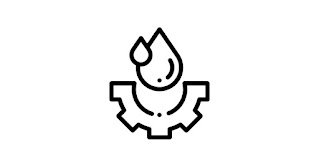1. The length of a pipe is 1 km and its diameter is 20 cm. If the diameter of an equivalent pipe is 40 cm, then its length is
a) 32 km
b) 20 km
c) 8 km
d) 4 km
Ans: a
2. Two pipes of same length and diameters d and 2d respectively are connected in series. The diameter of an equivalent pipe of same length is
a) less than d
b) between d and 1.5 d
c) between 1.5 d and 2d
d) greater than 2d
Ans: a
3. The horse power transmitted through a pipe is maximum when the ratio of loss of head due to friction and total head supplied is
a) 1/3
b) 1/4
c) 1/2
d) 2/3
Ans: a
4. The boundary layer thickness at a distance of l m from the leading edge of a flat plate, kept at zero angle of incidence to the flow direction, is O.l cm. The velocity outside the boundary layer is 25 ml sec.
The boundary layer thickness at a distance of 4 m is
a) 0.40 cm
b) 0.20 cm
c) 0.10 cm
d) 0.05 cm
Assume that boundary layer is entirely laminar.
Ans: b
5. Drag force is a function of
i) projected area of the body
ii) mass density of the fluid
iii) velocity of the body
The correct answer is
a) (i) and (ii)
b) (i) and (iii)
c) (ii) and (iii)
d) (i), (ii) and (iii)
Ans: d
6. The correct relationship among displacement thickness d, momentum thickness m and energy thickness e is
a) d > m > e
b) d > e > m
c) e > m > d
d) e > d > m
Ans: d
7. For laminar flow in circular pipes, the Darcy’s friction factor f is equal to
a) 16/Re
b) 32/ Re
c) 64/ Re
d) none of the above where R,, is Reynolds number.
Ans: c
8. Surge wave in a rectangular channel is an example of
i) steady flow
ii) unsteady flow
iii) uniform flow
iv) non-uniform flow
The correct answer is
a) (i) and (iii)
b) (ii) and (iii)
c) (i) and (:v)
d) (ii) and (iv)
Ans: d

